
Super Mario Kart is a kart racing game developed and published by Nintendo for the Super Nintendo Entertainment System (SNES). The first game in the Mario Kart series, it was released in Japan and North America in 1992, and in Europe the following year in 1993. Selling 8.76 million copies worldwide, the game went on to become the fourth best-selling SNES game of all time. Super Mario Kart was re-released on the Wii's Virtual Console in 2009, on the Wii U's Virtual Console in 2013, and on the New Nintendo 3DS's Virtual Console in 2016. Nintendo re-released Super Mario Kart in 2017 as part of the company's Super NES Classic Edition.

Chocobo Racing is a racing game developed and published by Square for the PlayStation, A spin-off of the Final Fantasy series and part of the Chocobo spin-off series. It was released in Japan in March 1999, followed by North America and Europe in August and October, respectively. The game's star and namesake is the Chocobo, with other figures from the Final Fantasy series, such as Mog the Moogle, the Black Mage, and Cid being part of the cast. Most of the game's soundtrack is composed using songs from previous Final Fantasy titles. As a formulaic kart racer, Chocobo Racing is often compared to Mario Kart and Crash Team Racing.

Mario Party 5 is a 2003 party video game developed by Hudson Soft and published by Nintendo for the GameCube. It is the fifth installment in the Mario Party series and the second game in the series to be released for the GameCube. The game is set in the fictional Dream Depot, consisting of seven game boards. The single-player "Story" mode involves the player winning multiple games against the Koopa Kids to prevent Bowser from conquering the Dream Depot. The main multiplayer game mode consists of four characters from the Mario series playing a board game, with each board having a set theme. The game also features several minigames, which are played after every set of turns. Mario Party 5 introduces the "Super Duel" mode to the franchise, which requires players to assemble and control custom made battle vehicles which can be used in combat against other machines. The game features 10 playable characters, with playable debuts to the series from Toad, Boo, and Koopa Kid.
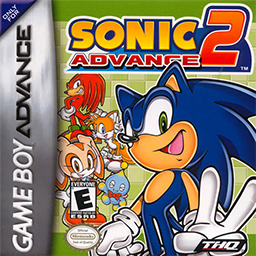
Sonic Advance 2 is a 2002 platform game developed by Dimps and published by Sega for the Game Boy Advance. It is an installment in the Sonic the Hedgehog series and the sequel to 2001's Sonic Advance. The story follows Sonic as he sets out to save his friends and retrieve the seven magical Chaos Emeralds from Dr. Eggman. Gameplay consists of the player completing various levels as one of five characters, each with their own unique attributes. After each zone is completed, the player faces Dr. Eggman in a boss battle.

Mario Party is a party video game series featuring characters from the Mario franchise in which up to four local players or computer-controlled characters compete in a board game interspersed with minigames. The games are currently developed by Nintendo Cube and published by Nintendo, being previously developed by Hudson Soft. The series is known for its party game elements, including the often unpredictable multiplayer modes that allow play with up to four, and sometimes eight, human players or CPUs.
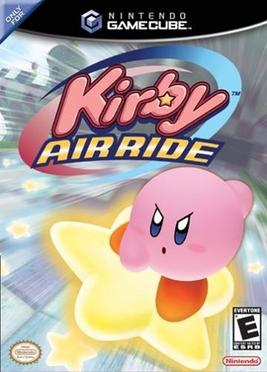
Kirby Air Ride is a 2003 racing video game starring Kirby, developed by HAL Laboratory and published by Nintendo for the GameCube.

Wave Race: Blue Storm is a jetski racing video game developed and published by Nintendo for the GameCube in late 2001. It is the sequel to the 1996 Nintendo 64 game Wave Race 64, and the third in the series that started with the 1992 Game Boy game Wave Race.

1080° Snowboarding is a snowboarding video game developed and published by Nintendo for the Nintendo 64 in 1998. In the game, players control one of five snowboarders from a third-person perspective, using a combination of buttons to jump and perform tricks across eight levels.

1080° Avalanche is a snowboarding video game developed by Nintendo Software Technology and published by Nintendo for the GameCube. It was released on November 28, 2003, in Europe, on December 1, 2003, in North America, and on January 22, 2004, in Japan. Avalanche is a sequel to the 1998 video game 1080° Snowboarding for the Nintendo 64.
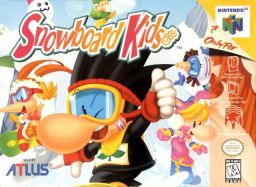
Snowboard Kids, is a snowboarding video game for the Nintendo 64. It was developed by Racdym and published by Atlus. Many reviewers compared its style to that of the Mario Kart series. An enhanced port, Snowboard Kids Plus, was released in Japan in January 1999 for the PlayStation.
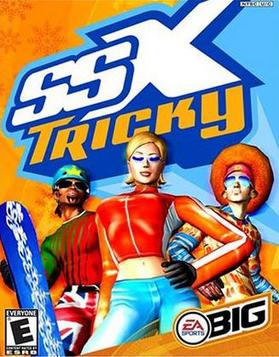
SSX Tricky, also known as SSX 2 or SSX 2: Tricky, is a snowboarding video game, the second game in the SSX series published by Electronic Arts under the EA Sports BIG label and developed by EA Canada. A direct sequel to SSX, the game was originally released in 2001 for PlayStation 2, GameCube, and Xbox, It was later ported to the Game Boy Advance in October 2002. SSX 3 followed in 2003.
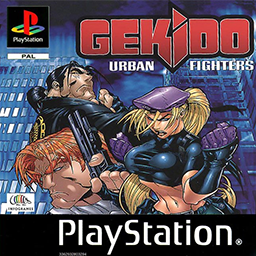
Gekido is a beat 'em up video game for the PlayStation console, created by Italian studio NAPS Team. The game uses a fast-paced beat 'em up system and a 3D side scrolling gameplay, with many bosses and a colorful design in terms of graphics. The game features the music of Fatboy Slim and Apartment 26. Marvel comic book artist Joe Madureira also contributed. Versions of Gekido were also planned for the Game Boy Color and N-Gage but were never released. NAPS team released the prototype of the Game Boy Color game on February 13, 2017.
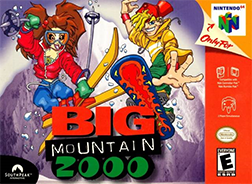
Big Mountain 2000, known in Japan as Snow Speeder, is a skiing/snowboarding video game for the Nintendo 64.

Twisted Edge Extreme Snowboarding, released as Twisted Edge Snowboarding in Europe, is a snowboarding video game released for the Nintendo 64, published by Midway in North America and by Kemco in Japan and Europe. It was released in Japan as King Hill 64: Extreme Snowboarding. Twisted Edge Extreme Snowboarding was not very well received commercially or critically.
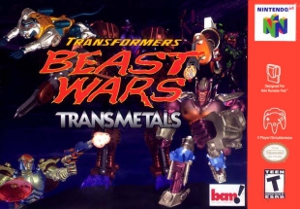
Transformers: Beast Wars Transmetals is a 1999 3D fighting game based on the Transformers: Beast Wars cartoon series and toy-line for the Nintendo 64 and PlayStation. Each version features different mechanics and playable characters.

SSX is a series of snowboarding video games published by EA Sports. SSX stands for Snowboard Supercross. The series introduced skiing with its fourth installment SSX on Tour. The creator of the series, Steve Rechtschaffner, is the inventor of the Olympic snowboarding event boardercross. SSX was a launch title for both the EA Sports Big brand and the original PlayStation 2.

Sonic Rivals 2 is a 2007 racing video game, the sequel to the 2006 game Sonic Rivals. The game was developed by Backbone Entertainment and supervised by Sega Studio USA, for the PlayStation Portable handheld video game console. Sonic Rivals 2 was released across November and December 2007. It received "mixed or average" reviews from critics.
Naruto: Clash of Ninja, released in Japan as Naruto: Gekitō Ninja Taisen!, is a series of 3D cel-shaded fighting games based on the manga and anime series Naruto by Masashi Kishimoto. They are developed by Eighting and published by D3 Publisher and Tomy. The series began with four GameCube games, with the first two available internationally and the last two released exclusively in Japan, before splitting into two parallel Wii-exclusive follow-up series: the Gekitō Ninja Taisen EX tetralogy released exclusively in Japan and its international counterpart, the Clash of Ninja: Revolution trilogy. The two Wii series share the same gameplay mechanics, but differ with respect to content and characters, with the international Revolution series being based on a localized version of the Naruto anime series. The first half of the original series and the entire Revolution trilogy are available in North America and Europe, the first two Revolution games are available in Australasia and all games in the series except the Revolution trilogy are available in Japan.

Mario Kart Wii is a 2008 kart racing game developed and published by Nintendo for the Wii. It is the sixth installment in the Mario Kart series, and was released in April 2008. Like its previous installments, Mario Kart Wii incorporates playable characters from the Mario series, who participate in races on 32 different race tracks using specialized items to hinder opponents or gain advantages. The game features multiple single-player and multiplayer game modes including two- to four-person split screen. Online multiplayer was supported until the discontinuation of Nintendo Wi-Fi Connection in May 2014. Mario Kart Wii uses the Wii Remote's motion-controls to provide intuitive and conventional steering controls. Each copy of the game was bundled with the Wii Wheel accessory to augment this feature and mimic a steering wheel.

Dragon Ball Z: Supersonic Warriors is a series of fighting games based on the Dragon Ball franchise. The first game was developed by Arc System Works and Cavia and was released for the Game Boy Advance on June 22, 2004. A sequel, Supersonic Warriors 2, was released in 2005 for the Nintendo DS.


















